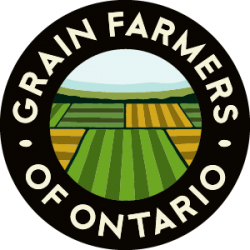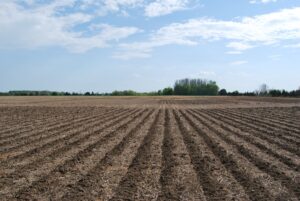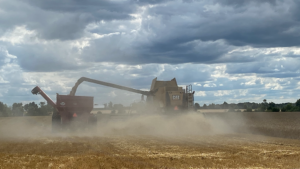Understanding Ontario’s basis levels
WHAT FACTORS DETERMINE OUR CASH PRICES
WHAT’S THE BASIS? You hear that common refrain throughout Ontario farm country. The textbook definition of basis is the difference between the cash or spot price of a commodity and the price of the nearest futures contract for the same commodity. For example the cash price minus the futures price equals basis. It is usually determined in relation to a futures contract and it may reflect different time periods, product forms, qualities and locations.
Some people might say it’s a moving target because the local cash price for corn, wheat and soybeans is the futures price adjusted for different factors such as the value of the Canadian dollar, freight, handling, storage, quality and localized demand. These cash prices change every day to reflect local conditions in your area.
Simply put, ‘basis’ is the ‘value’ where grain is being bought or sold and is moving to end-users. It is like an elastic band, which stretches and retracts depending on the pressures on it. Ontario’s corn, soybean and wheat crops all have different factors, which influence and change their basis.
corn basis – impacted by imports
For Ontario corn, the major price setters are the feed trade, Casco (at London, Port Colborne and Cardinal) and the ethanol plants in production across the province as well as the Varennes plant in Quebec. Basis levels are largely determined by the demand for corn among these end users.
With regard to this, there is a large caveat. Replacing Ontario corn with readily available US corn is always the hammer for the corn basis in Ontario. At anytime when local supply and demand makes the value of Ontario corn close to or exceeding the replacement cost of US corn, the motivation to bid up Ontario corn is gone. Corn can be sourced by truck, rail or vessel, with vessel being the cheapest transport into Ontario ports. This effectively means that US replacement cost for corn limits basis gains because it forms a ceiling for Ontario cash prices.
For example on December 8th, 2009 the US replacement cost was $4.24 per bushel landed into London, Ontario. This was $0.39 over the March 2010 futures price of $3.85 per bushel. On that same day, elevator bids were approximately $3.60 per bushel and the Aylmer ethanol bid was approximately $3.75. At the same time the large feed mills in Ontario had a bid out at $4.19. This is a typical price structure for Ontario with US replacement price always forming the ceiling. Basis bids adjust accordingly.
soybeans – determined by the processors
The main processors in Hamilton and Windsor set the soybean cash price in Ontario. When they are actively in the market sourcing soybeans, basis is buoyant and when they are not, basis is stagnant. Local elevator bids reflect transportation and handling costs to deliver soybeans to Hamilton or Windsor.
For instance on December 7th, 2009, the local basis at a Chatham elevator was -$0.39 per bushel. At the Windsor processor the same day basis was +$0.03 for a difference of $0.43 per bushel, which represents the elevators “handle” or charge for transporting those soybeans to the processor.
It was a bit different in the fall of 2009 as the export basis out of Ontario was actually more attractive versus the two processors’ basis. This doesn’t happen often, but it’s just another reason producers need to check basis on a daily schedule.
wheat basis – three main pressure points
There are three main pressure points for wheat basis in Ontario. The first pressure point is Ontario demand. For example, the wheat basis will change depending on the size and quality of the Ontario crop.
Most of the province’s flourmills are situated in central Ontario and this drives the Ontario basis in that area. As you move into southwestern Ontario the wheat basis is normally determined by the Toledo price and/or the export price.
The third pressure point for Ontario wheat basis is in the lower St. Lawrence at ice-free ports in Quebec. This price is determined by the US Gulf price with the Ontario wheat basis being adjusted to win export markets against wheat on offer from the Mississippi River.
With futures contracts representing a price deliverable to Chicago, the wheat basis value represents, in Canadian dollar terms, the cost of transportation and handling to get it there. Basis will generally be lower the farther you get away from Chicago. In the case of Ontario wheat destined for Toledo, wheat from Essex County has a shorter distance to travel versus wheat from Perth County. The wheat basis will reflect that. •







